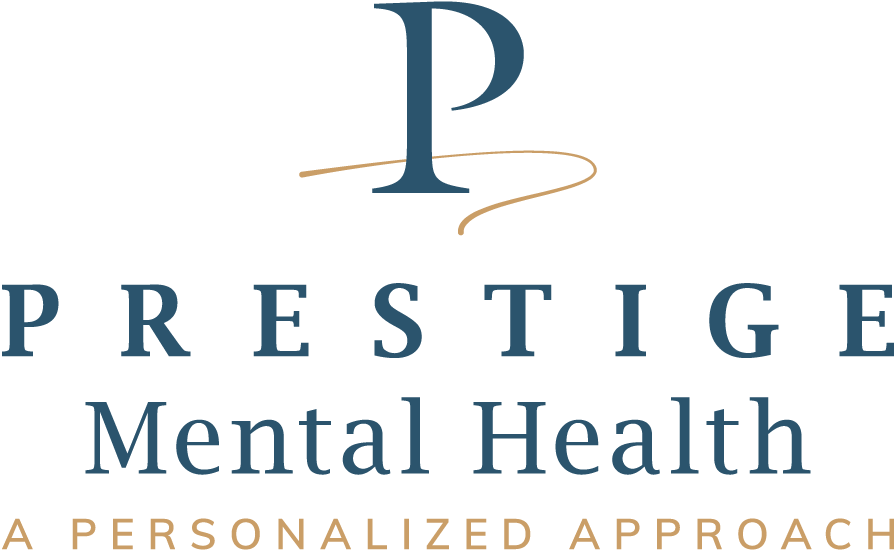Bipolar disorder is a complex mental health condition that affects millions of people worldwide. It is characterized by extreme mood swings, including emotional highs (mania or hypomania) and lows (depression). Understanding bipolar disorder is crucial for those affected by it and for those who support them. This blog will provide an in-depth exploration of bipolar disorder, its symptoms, causes, and treatment options, with insights from Dr. April Sullivan of Prestige Mental Health in Las Vegas, NV.
What is Bipolar Disorder?
Bipolar disorder, formerly known as manic-depressive illness, is a mental health condition that causes significant shifts in mood, energy levels, and activity levels. These shifts can affect a person’s ability to carry out daily tasks. The disorder is divided into several types, with the most common being Bipolar I Disorder, Bipolar II Disorder, and Cyclothymic Disorder.
- Bipolar I Disorder: This type is defined by manic episodes that last at least seven days or by manic symptoms so severe that immediate hospital care is needed. Depressive episodes, typically lasting at least two weeks, often occur as well.
- Bipolar II Disorder: This type is defined by a pattern of depressive episodes and hypomanic episodes, but not the full-blown manic episodes that are typical of Bipolar I Disorder.
- Cyclothymic Disorder: This type involves periods of hypomanic symptoms as well as periods of depressive symptoms lasting for at least two years (one year in children and adolescents), but the symptoms do not meet the diagnostic requirements for a hypomanic episode and a depressive episode.
The symptoms of bipolar disorder can vary widely between individuals, and even within the same individual over time. This variability makes bipolar disorder particularly challenging to diagnose and manage.
Symptoms of Bipolar Disorder
The symptoms of bipolar disorder are divided into two main categories: manic (or hypomanic) symptoms and depressive symptoms.
Manic Symptoms
Manic episodes are periods of extremely elevated mood and energy levels. Some of the key symptoms of mania include:
- Increased Energy and Activity: A noticeable increase in energy, often leading to hyperactivity and reduced need for sleep.
- Euphoric Mood: An excessively elevated or irritable mood that is out of proportion to the situation.
- Grandiosity: An inflated sense of self-esteem or unrealistic beliefs in one’s abilities and powers.
- Risky Behaviors: Engaging in activities that have a high potential for harmful consequences, such as reckless driving, spending sprees, or unprotected sex.
- Rapid Speech and Racing Thoughts: Speaking more quickly than usual, jumping from one idea to another, and difficulty focusing.
Depressive Symptoms
Depressive episodes are periods of low mood and energy levels. Some of the key symptoms of depression include:
- Persistent Sadness or Emptiness: A pervasive feeling of sadness or hopelessness that lasts most of the day, nearly every day.
- Loss of Interest in Activities: A lack of interest or pleasure in activities that were once enjoyable, including hobbies, work, and socializing.
- Fatigue: A significant decrease in energy, often accompanied by feelings of lethargy or physical heaviness.
- Changes in Sleep Patterns: Difficulty falling asleep, staying asleep, or sleeping too much.
- Thoughts of Death or Suicide: Persistent thoughts about death, dying, or suicide, which may or may not include a specific plan.
These symptoms can be severe and can lead to significant impairments in daily functioning, relationships, and overall quality of life.
Causes of Bipolar Disorder
The exact cause of bipolar disorder is not fully understood, but research suggests that a combination of genetic, biological, and environmental factors play a role.
Genetic Factors
Bipolar disorder tends to run in families, indicating a genetic component. Individuals with a parent or sibling who has bipolar disorder are at a higher risk of developing the condition themselves. However, having a family history of bipolar disorder does not guarantee that someone will develop it.
Biological Factors
Research has shown that individuals with bipolar disorder often have physical changes in their brains. While the significance of these changes is still being studied, they suggest that there may be a biological basis for the disorder. Neurotransmitter imbalances, particularly involving serotonin, dopamine, and norepinephrine, are also thought to play a role in the development of bipolar disorder.
Environmental Factors
Certain environmental factors may trigger or exacerbate the symptoms of bipolar disorder. These can include:
- Stressful Life Events: Significant stressors, such as the loss of a loved one, financial problems, or a major life change, can trigger the onset of bipolar symptoms.
- Substance Abuse: The use of drugs or alcohol can worsen the symptoms of bipolar disorder and may also interfere with the effectiveness of treatment.
- Sleep Disturbances: Disruptions in sleep patterns can trigger manic or depressive episodes, highlighting the importance of maintaining a regular sleep schedule.
Treatment Options for Bipolar Disorder
Bipolar disorder is a lifelong condition that requires ongoing management. The goal of treatment is to stabilize mood swings, manage symptoms, and improve overall functioning. Treatment typically involves a combination of medication, psychotherapy, and lifestyle changes.
Medication
Medications are a cornerstone of treatment for bipolar disorder. The most commonly used medications include:
- Mood Stabilizers: Lithium is one of the most well-known mood stabilizers and has been used for decades to treat bipolar disorder. Other mood stabilizers include valproate and lamotrigine.
- Antipsychotic Medications: These may be used to manage manic or depressive episodes that do not respond to mood stabilizers. Examples include quetiapine and olanzapine.
- Antidepressants: While these are sometimes used to treat depressive episodes, they are typically prescribed with caution, as they can trigger manic episodes in some individuals.
Psychotherapy
Psychotherapy, or talk therapy, is an essential part of treatment for bipolar disorder. Some of the most effective forms of therapy include:
- Cognitive Behavioral Therapy (CBT): CBT helps individuals identify and change negative thought patterns and behaviors that contribute to mood swings.
- Interpersonal and Social Rhythm Therapy (IPSRT): This type of therapy focuses on helping individuals maintain regular daily routines and manage stress, which can reduce the frequency of mood episodes.
- Family Therapy: Involving family members in treatment can help improve communication, reduce conflict, and provide a supportive environment for managing bipolar disorder.
Lifestyle Changes
In addition to medication and therapy, certain lifestyle changes can help manage the symptoms of bipolar disorder. These include:
- Maintaining a Regular Sleep Schedule: Going to bed and waking up at the same time each day can help regulate mood.
- Managing Stress: Practicing stress-reduction techniques, such as mindfulness, meditation, and deep breathing exercises, can help prevent mood episodes.
- Avoiding Drugs and Alcohol: Substance use can interfere with treatment and exacerbate symptoms.
The Road Ahead: Embracing Hope and Resilience
Living with bipolar disorder can be challenging, but with the right treatment and support, individuals can lead fulfilling and productive lives. At Prestige Mental Health in Las Vegas, Dr. April Sullivan is dedicated to helping individuals understand and manage bipolar disorder. By offering a comprehensive treatment approach tailored to each individual’s needs, Dr. Sullivan empowers her patients to take control of their mental health and embrace a brighter future. Remember, seeking help is the first step towards healing, and with the right support, recovery is possible.
Sources
- Geddes, J. R., & Miklowitz, D. J. (2013). Treatment of bipolar disorder. The Lancet.
- Grande, I., Berk, M., Birmaher, B., & Vieta, E. (2016). Bipolar disorder. The Lancet.
- Malhi, G. S., & Bell, E. (2019). Bipolar II disorder: It’s time to listen. Bipolar Disorders.






